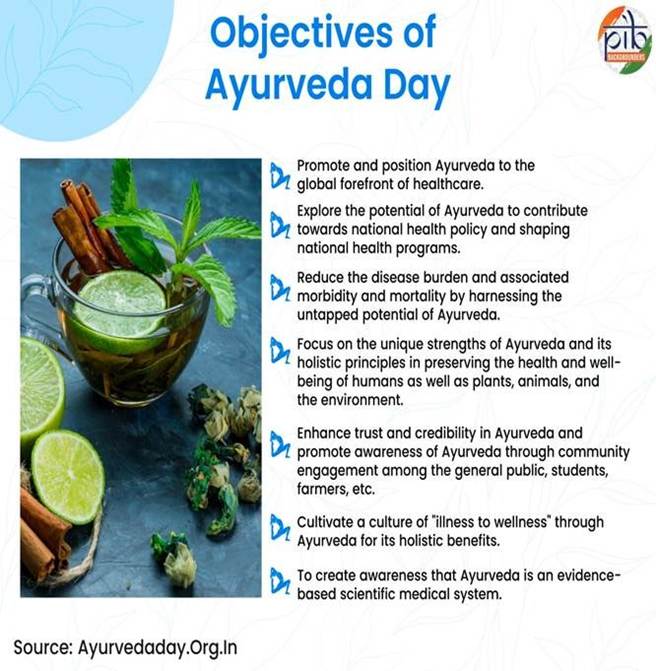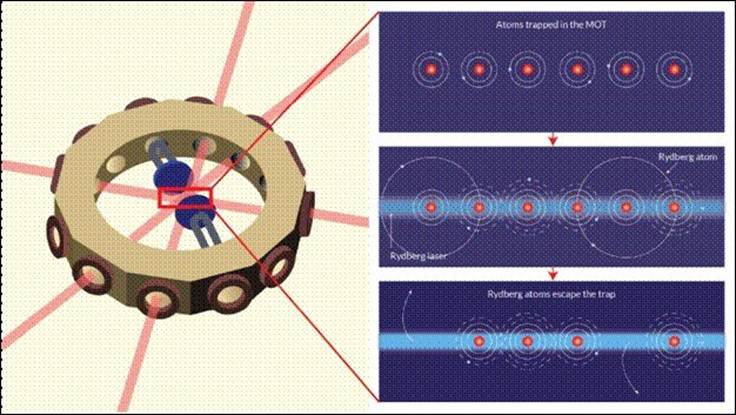Published on Sep 23, 2025
Daily PIB Summaries
PIB Summaries 23 September 2025

Content
- Ayurveda Day
- High energy pushes atomic brotherhood making way for next generation quantum devices
Ayurveda Day
What is Ayurveda?
- Meaning: “Ayur” = Life, “Veda” = Knowledge → Science of Life.
- Principle: Harmony between body, mind, spirit, and environment.
- Pillars: Preventive care, lifestyle management, diet, and natural therapies.
- Philosophy: Seeks balance between humans and nature, linking health to ecological well-being.
Relevance :
- GS1 – Indian Heritage & Culture: Ayurveda, ancient holistic health system; harmony of body, mind, spirit, environment.
- GS2 – Governance / International Relations: Ministry of AYUSH initiatives; ICD-11 recognition; ISO/BIS standards; MoUs with WHO, Germany, Japan, Mauritius, Nepal.
- GS3 – Science & Technology / Environment: Digital portals (DRAVYA, APTA), Ran-Bhaji Utsav; preventive healthcare, sustainability, medical tourism.

Ayurveda Day: Background
- First celebrated: 2016, focused on “Diabetes Prevention & Control”.
- Earlier Date: Dhanteras (Lord Dhanvantari’s birthday, divine physician).
- Fixed Date (since 2025): September 23 (Gazette Notification, March 2025).
- Purpose: Institutionalize Ayurveda as a global calendar event.

- Evolution of Themes:
- 2022: Ayurveda @ 2047 (vision under Amrit Mahotsav).
- 2023: Ayurveda for One Health (human-animal-plant-environment interlinkage).
- 2024: “Vaishvik Swasthya Ke Liye” (Global Health through Ayurveda).
- 2025: “Ayurveda for People & Planet” (health + sustainability).
Ayurveda Day 2025 Highlights
- 10th edition, celebrated at All India Institute of Ayurveda (AIIA), Goa.
- Massive Outreach: Across India + 150+ countries via Indian Missions, universities, wellness orgs, diaspora.
- Key Launches:
- Desh ka Swasthya Parikshan: Nationwide health check campaign (CCRAS).
- DRAVYA Portal: Largest database on Ayurvedic herbs/products (classical + modern data).
- APTA Portal: Documenting lives & contributions of Ayurveda luminaries.
- Integrated Oncology Unit: Jointly by AIIA, Goa Govt., Tata Memorial Centre.
- Ran-Bhaji Utsav: Celebrating local edible plants for health & biodiversity.
- New Hospital Infrastructure: Sterile supply, linen care, blood supply at AIIA Goa.
- Recognition: National Dhanwantari Ayurveda Awards to promote excellence in practice, teaching, research, and policy.
Institutional & Policy Framework
- Ministry of AYUSH (2014): Dedicated ministry for Ayurveda, Yoga, Unani, Siddha, Homeopathy.
- National AYUSH Mission (2014):
- Strengthening AYUSH hospitals & dispensaries.
- Co-location of AYUSH in PHCs, CHCs, DHs.
- Establishment of integrated hospitals.
- Global Integration Efforts:
- WHO: Inclusion of Ayurveda, Siddha, Unani in ICD-11 (TM-2).
- ISO (2023): Dedicated standards for Ayurveda for global credibility.
- BIS: 91 standards (herbs, Panchakarma equipment, Yoga terminology).
- WHO Global Centre for Traditional Medicine: Gujarat.
- MoUs with countries: Germany, Mauritius, Japan, Nepal.
- AYUSH Chairs in foreign universities: e.g., Western Sydney University.
- AYUSH Cells in 30+ countries.
Economic & Societal Relevance
- Billion-dollar industry: Growing demand in preventive healthcare & wellness sector.
- Medical Tourism: Ayurveda centers attracting international patients.
- Innovation: Digital Ayurveda tools, start-up incubation, integration with modern healthcare.
- Employment: Expanding sector generates opportunities in pharma, research, wellness, and tourism.
Arguments in Favor
- Holistic Healthcare: Preventive and lifestyle-based approach suits modern health challenges (obesity, diabetes, stress).
- Global Recognition: WHO, ISO, BIS standardization increases credibility.
- Sustainability Link: “People & Planet” aligns Ayurveda with environmental ethics and SDGs (climate-health nexus).
- Cultural Soft Power: Enhances India’s global leadership in traditional knowledge.
Challenges
- Scientific Validation: Need for more robust clinical trials and peer-reviewed research.
- Integration Issues: Coordination with allopathic medicine still limited.
- Commercialization Risks: Over-commercial use may dilute authenticity and sustainability of medicinal plants.
- Access & Equity: Benefits of Ayurveda must reach rural & marginalized communities, not just urban elites or foreign markets.
Holistic Perspective
- People Dimension: Preventive healthcare, lifestyle balance, mental health, affordable wellness.
- Planet Dimension: Sustainable use of medicinal plants, biodiversity protection, local edible greens (Ran-Bhaji Utsav), climate-adaptive health practices.
- Global Dimension: Bridging traditional knowledge with modern healthcare systems, enhancing India’s soft power, promoting “Vasudhaiva Kutumbakam” (One Earth, One Family, One Future).
Conclusion
- Ayurveda Day 2025 marks a milestone in positioning Ayurveda as a science of both human and planetary health.
- By combining ancient wisdom with modern validation, and local roots with global outreach, Ayurveda is being rebranded as not just India’s heritage, but a global public good.
- Its future lies in scientific rigor, sustainable practices, equitable access, and global collaboration, ensuring Ayurveda’s role as a cornerstone of the 21st century wellness movement.
High energy pushes atomic brotherhood making way for next generation quantum devices
Atoms & Rydberg States
- Atom: Smallest unit of matter with electrons orbiting around the nucleus.
- Rydberg Atom: Atom with one electron excited to a very high energy level → atom “balloons” in size.
- Special Properties:
- Hypersensitive to external fields (electric, magnetic, light).
- Strong inter-atomic interactions.
- Ideal for exploring quantum entanglement and simulations.
Relevance :
- GS3 – Science & Technology: Collective behavior in Rydberg atoms; next-gen quantum computers, sensors, communication devices.
- GS2 – Governance / Strategic Technology: Supports National Quantum Mission; strengthens Atmanirbhar Bharat in high-tech strategic sectors.

The Experiment (India-led)
- Institutes: Raman Research Institute (RRI), Bengaluru (experimental), IISER Pune (theoretical).
- Atoms Used: Rubidium atoms cooled to near absolute zero → trapped with lasers + magnetic fields.
- Process:
- Excited atoms with light into Rydberg states.
- Observed Autler–Townes splitting (clean signal pattern of excited atoms).
- Pushed beyond 100th energy level → signals distorted (blurred).
- Significance: Distortion is not noise/error but evidence of atoms interacting collectively, not behaving independently.
Discovery & Its Meaning
- First Global Demonstration: Interaction-driven distortions at such high Rydberg states.
- Threshold Identified: The line between isolated precision atoms and entangled atomic communities.
- Implication: Knowing when atoms “talk” to each other is crucial for building quantum devices.
Why It Matters for Quantum Tech
- Quantum Computers: Collective behavior of atoms can be harnessed for faster and more secure processing.
- Quantum Sensors: Ultra-precise detection of signals (magnetic fields, gravity waves, etc.).
- Quantum Communication: Secure, entanglement-based data transfer.
- Simulation of Complex Systems: Understanding biological, chemical, or astrophysical systems by mimicking them with interacting atoms.
Technological & Scientific Contributions
- Detection Breakthrough:
- Custom detection system at RRI → capable of catching signals from even a few photons.
- Enabled study of very high Rydberg states (n > 100) where signals are weak.
- Collaboration: Experimental (RRI) + theoretical (IISER Pune) integration → strong India-led innovation.
- Scientific Advance: Validates models of how matter transitions from single-particle physics to collective quantum systems.
India’s Position in Global Quantum Race
- Global Visibility: First to show such distortions at high Rydberg states → places India on the frontline of quantum research.
- Strategic Value:
- Supports India’s National Quantum Mission (2023–2031).
- Strengthens India’s role in emerging tech geopolitics (US, EU, China also racing in quantum).
- Talent Development: Young researchers (PhD students) at the heart of discovery → builds next-gen scientific ecosystem.
Broader Implications
- Fundamental Physics: New insights into matter’s behavior at extreme scales.
- Technology Development: Helps design reliable, scalable quantum devices.
- Innovation Ecosystem: Bridges lab-scale physics with real-world engineering of sensors/computers.
- National Impact: Boosts Atmanirbhar Bharat in high-tech frontiers, reducing dependence on Western quantum ecosystems.
Strengths:
- Pioneering experiment, globally significant.
- Demonstrates India’s ability to engineer sensitive detection setups.
- Strong collaboration between experimental and theoretical physics.
Challenges:
- Translating lab-scale physics into commercially viable devices is a long process.
- Needs large-scale funding and industry partnerships to compete with US/China quantum investments.
- Requires integration with global supply chains for quantum hardware (lasers, cryogenics, semiconductors).
Conclusion
- This breakthrough marks a turning point in India’s quantum journey.
- By proving how atoms shift from independent to collective behavior under extreme energy, Indian scientists have opened a new roadmap for quantum computers, sensors, and communication systems.
- The discovery strengthens India’s scientific prestige, technological capabilities, and strategic positioning in the global quantum revolution.
